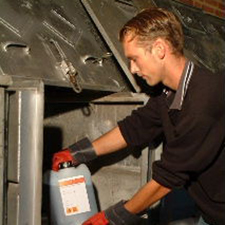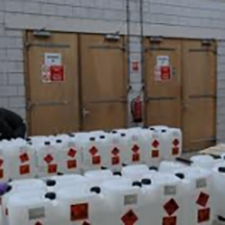Hazardous waste

Hazardous waste is also a hazardous substance. Treat this waste stream according to the internal rules. Not only in the interest of umc employees, patients and visitors, but also in the interest of the environment and local residents. The following regulations apply to hazardous waste:
- Never mix or dilute hazardous waste with other substances.
- Collect all waste by type. Familiarize yourself with the regulations for waste separation within your umc. For example, there are waste streams for GMO waste, microbiologically contaminated waste, aqueous waste, organic liquids, halogen-rich and low-halogen. Please note: some substances react violently with each other or produce hazardous substances when they come into contact with each other, for example the combination of acid with lye. For advice, you can contact the occupational health and safety service.
- Chemicals have a limited shelf life. Hold regular clean-ups to dispose of disused chemicals.
- Make sure that barrels with waste from outside are clean. If necessary, clean the outside of the drums before handing them over to Waste Management.

- Follow the internal regulations for the disposal of waste from radionuclide laboratories and GMO laboratories.
- Always collect hazardous liquid waste in UN-approved plastic drums, preferably no more than 10 litres per drum.
- When pouring over and collecting flammable and toxic liquids, ensure proper ventilation. However, try to keep this to a minimum.
- Do not discharge hazardous substances as waste into the sewer. Substances that belong to the list of Substances of Very High Concern (SVHC) must always be disposed of as hazardous waste. See also: To flush or not to flush down the sink.
- The umc's Environmental permit indicates the conditions under which discharge is permitted. Ask the environmental expert what is allowed.
- Register the amount of waste handed over to the waste collector for each waste stream. According on the environmental permit conditions, an annual report must be provided of the quantity of hazardous substances disposed. This is usually the responsibility of the waste manager and/or the environmental department.
